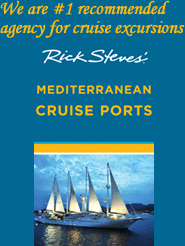 |
|
||||||||||||||||||||||||||||
GROUP JOURNAL FOR |
||||||||||||||||||||||||||||
|---|---|---|---|---|---|---|---|---|---|---|---|---|---|---|---|---|---|---|---|---|---|---|---|---|---|---|---|---|
May 10, 2005 - June 01, 2005
|
||||||||||||||||||||||||||||
The breakfast in our hotel today was quite a spread - almost every possible kind of olive you could imagine! Different cheeses, breads, wonderful jellies. Konya is a large bustling city, and from what we know, quite conservative.Our first stop was the mosque at Konya, quite an amazing structure. The calligraphy and tile work ascended towards the light coming in from the domes - really a wonder effect. When we entered we saw a group of women praying at the front of the mosque, dispelling, as we learned from Meli, that women are not allowed to pray on the first floor. Meli gave a wonderful talk on Islam - I can't think of a better setting than the mosque at Konya to do that! She also told the life story of Mevlana Gelaratin Rumi, mystic poet and the man to whom Sufis pay homage. His philosophies are based on love and acceptance. The famous whirling dervishes of Turkey spin in ecstasy while they pray. Mevlana Rumi also whirled, and women can also whirl, though whirling is not as popular as it once was. Mevlana Rumi said that love was the "sultan of the sultan," and this concept is symbolized by a conical hat sitting on a throne.This talk was a wonderful introduction to the Mevlana Rumi's mausoleum, which is adjacent to the mosque. I am still amazed at the calligraphy on the walls, in all sizes, as well as the sumptous fabrics that cover the coffins of the relatives of Melvana Rumi and his important followers. We put on blue plastic shoe covers before we entered, and of course, covered our heads. Mevlana Rumi's tomb is the largest, and sits next to his fathers coffin.After this we borded the bus and headed to Afyon, which means opium in Turkish. Atop a craggy mountain over looking the city is a fortified structure, the "black opium castle." We saw fields thick with red and purple poppies. Many medicines are made from poppies, and they were much larger than I imagined. The fields site against the Sultan Mountains - rocky, with a little snow on the top. Lunch was in a restaurant/bus stop/visitors center. Very fantastic design, with stuffed deer heads and a leopard pelt. In the front was an emormous statue of Hodja - the folk hero who rides backwards on a donkey. I purchaed a collection of Hodja stories for Michael to enjoy and learn from when he is a little older.We reached Afyon around 2:30 and we headed straight for the felting workshop. I think this is one of the most intesting experiences I ever had. We entered an old stucco and wood building - moist and with the odor of wool. We were greated by our hosts, Mustafa, Mehmet and Ismail Erkus. We climbed a wooden ladder to the second floor where we learn about the felting process: 1. plastic mat laid out on the floor 2. colored wool felt cut into different designs and arranged, face down, on the mat 3. white wool spread over the colored pieces; one uses a large wooden fork to distribute the wool
4. the entire area is sprinkled with water 5. the mat is rolled up and placed into an extractor 6. the mat is unrolled and you have a felt rug Students on the second floor made a large felt with a design inspired by all the wonderful motifs we've seen on the trip - the SS for " I love you," the tree of life, the whirling dervish, etc. They place a large EC for Earlham in the middle. Nancy and Lincoln purchased it and it will be stored in the Collection at the College and displayed in the spring. Students on the first floor made small individual rugs of their own designs.
|
||||||||||||||||||||||||||||
|
||||||||||||||||||||||||||||







 Home
Home Next
Next
